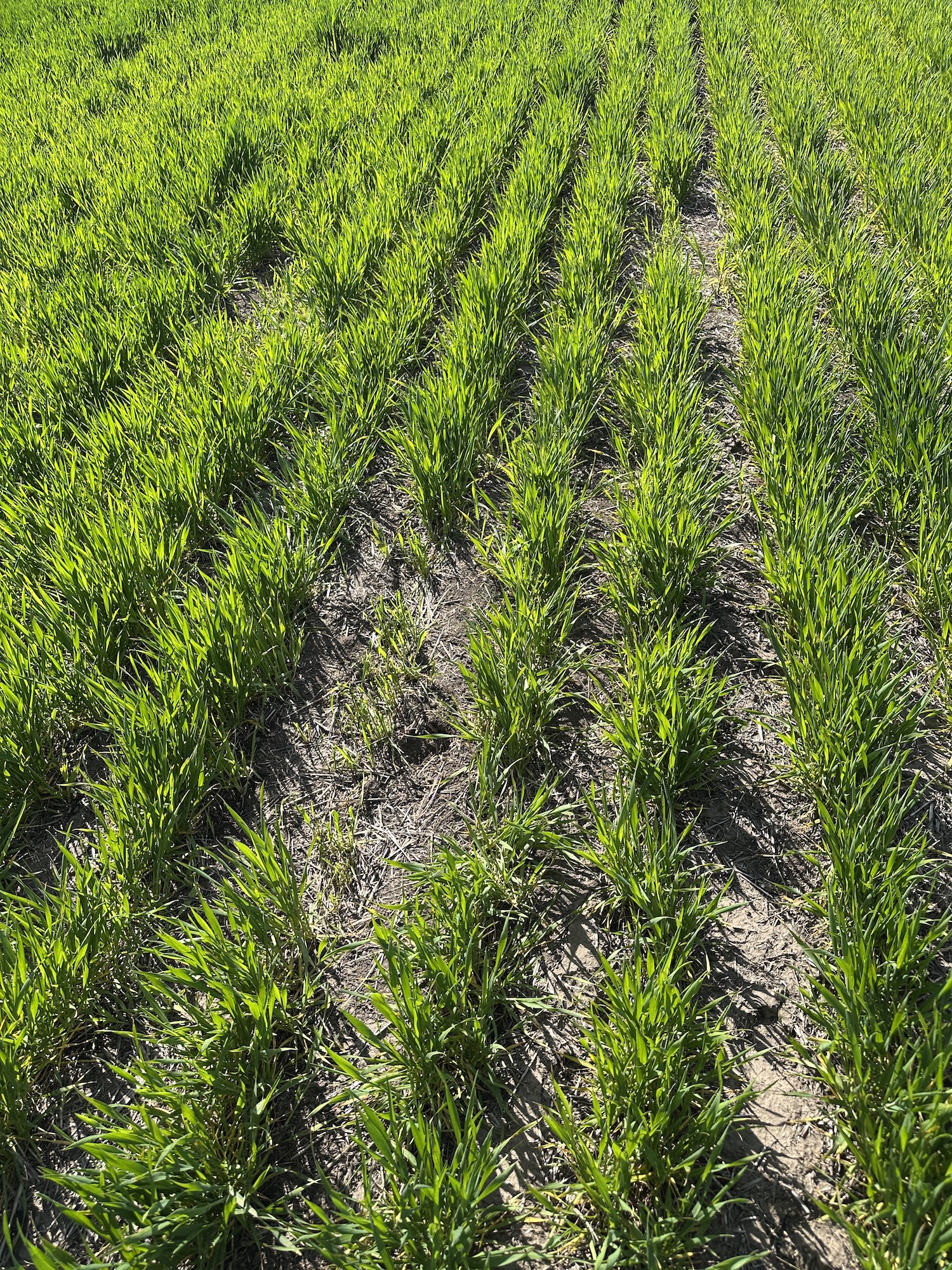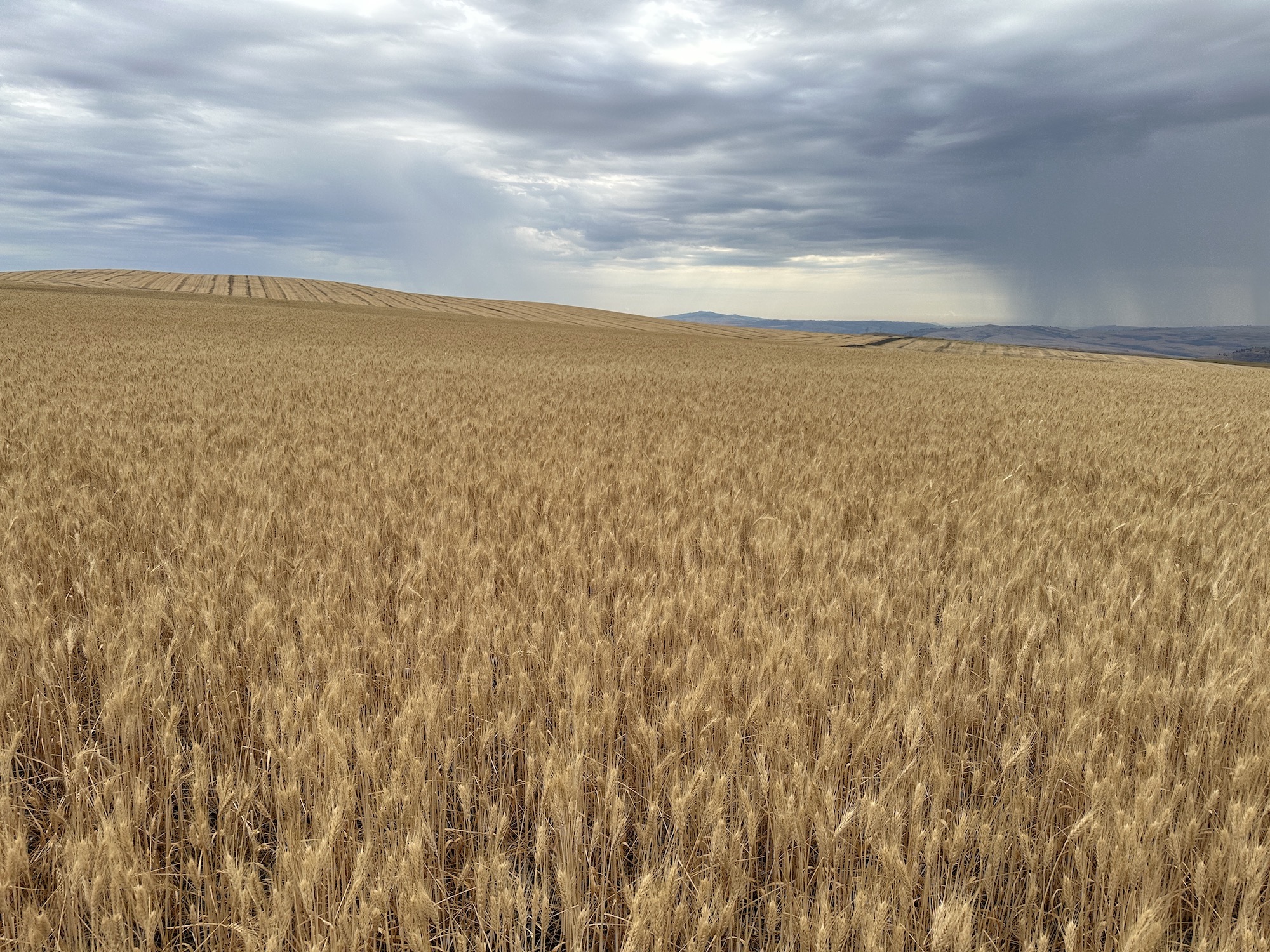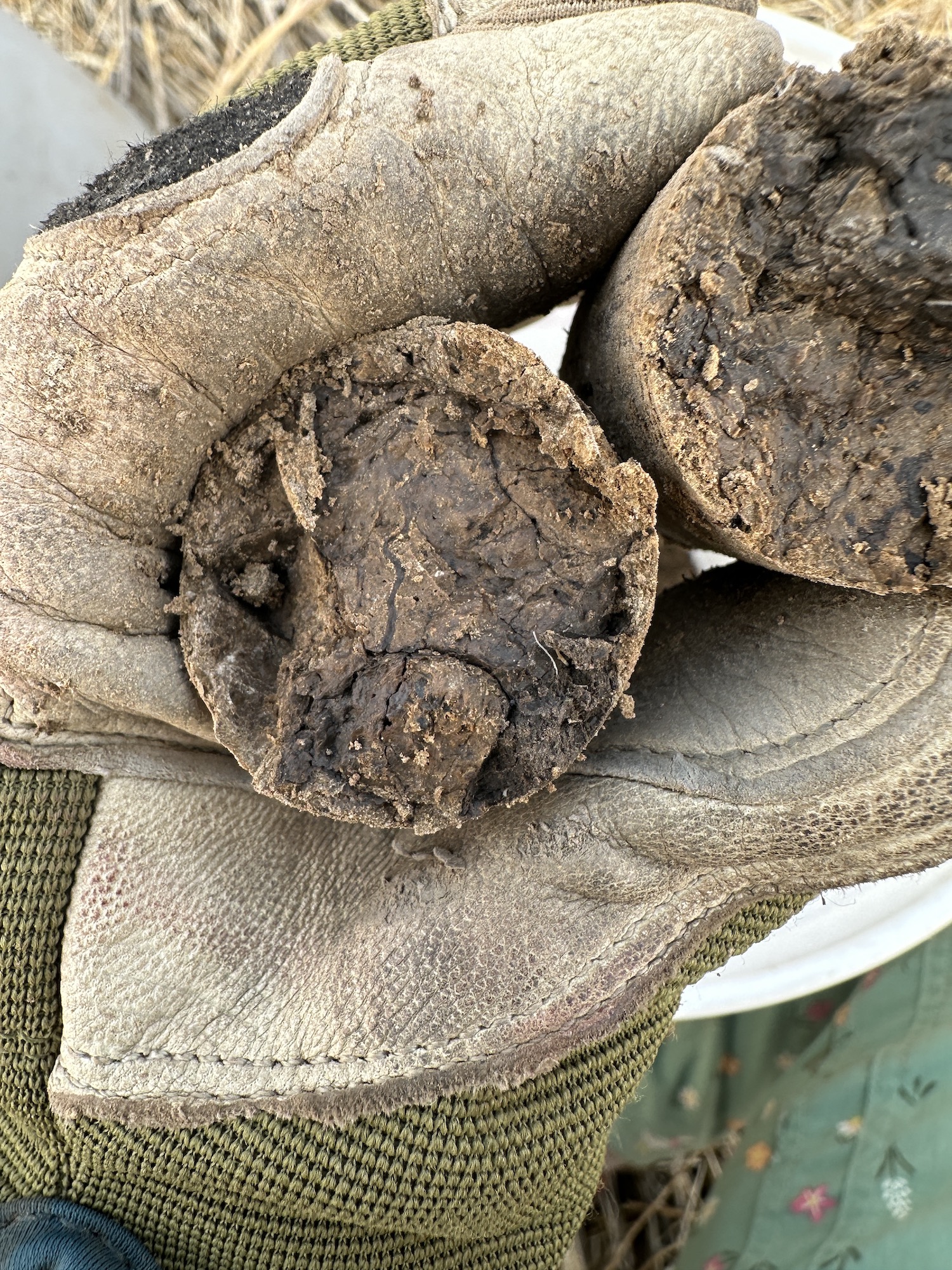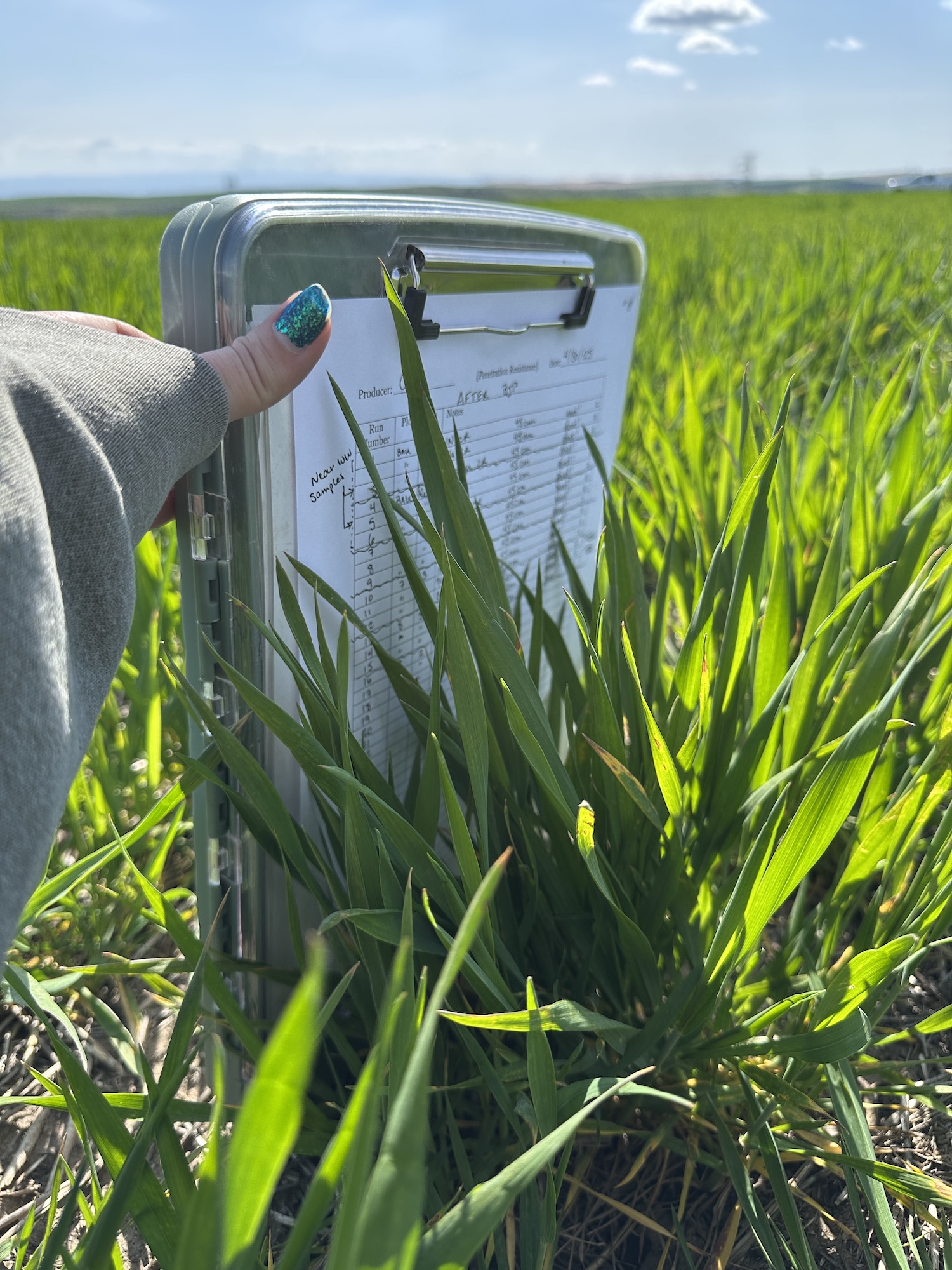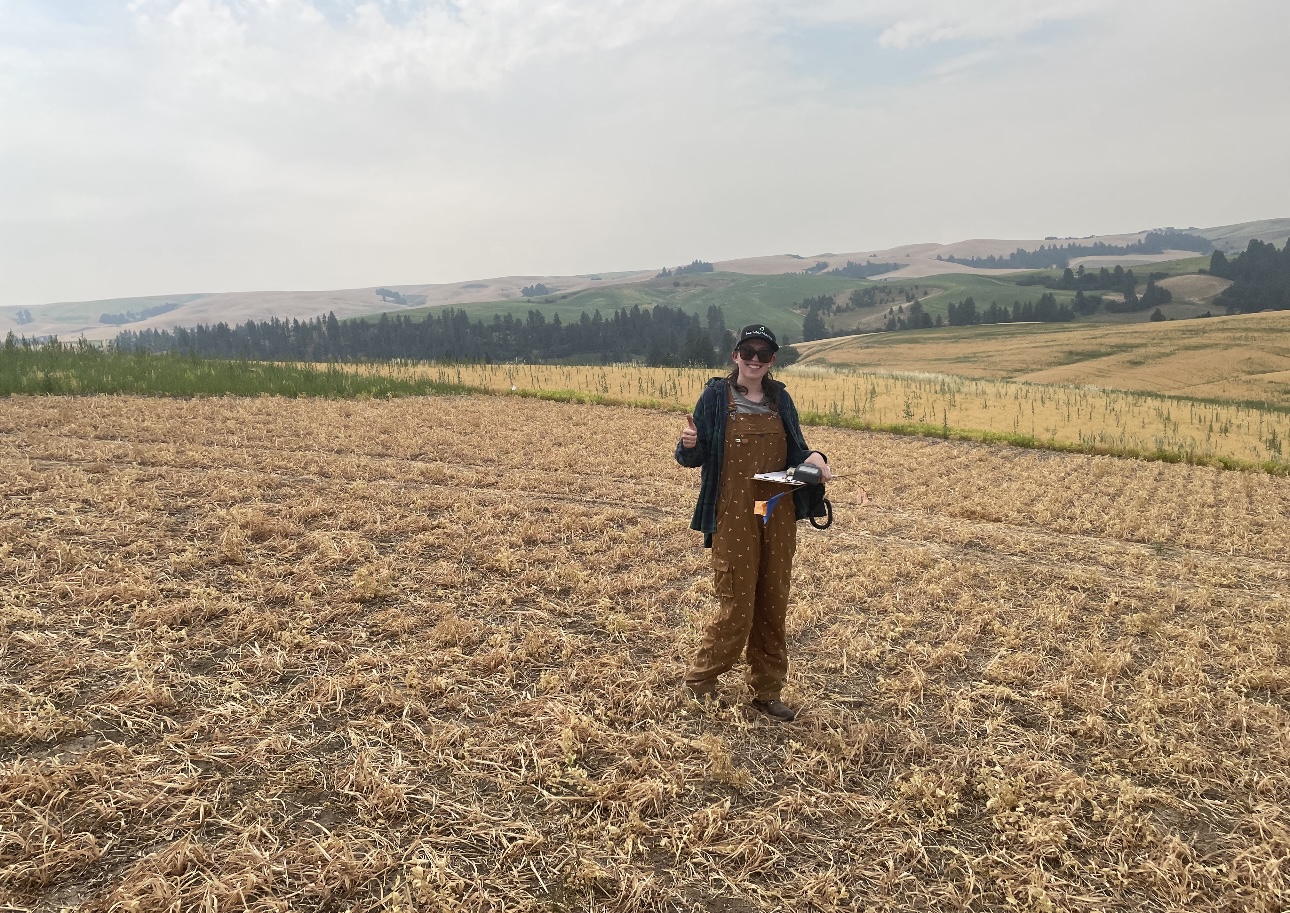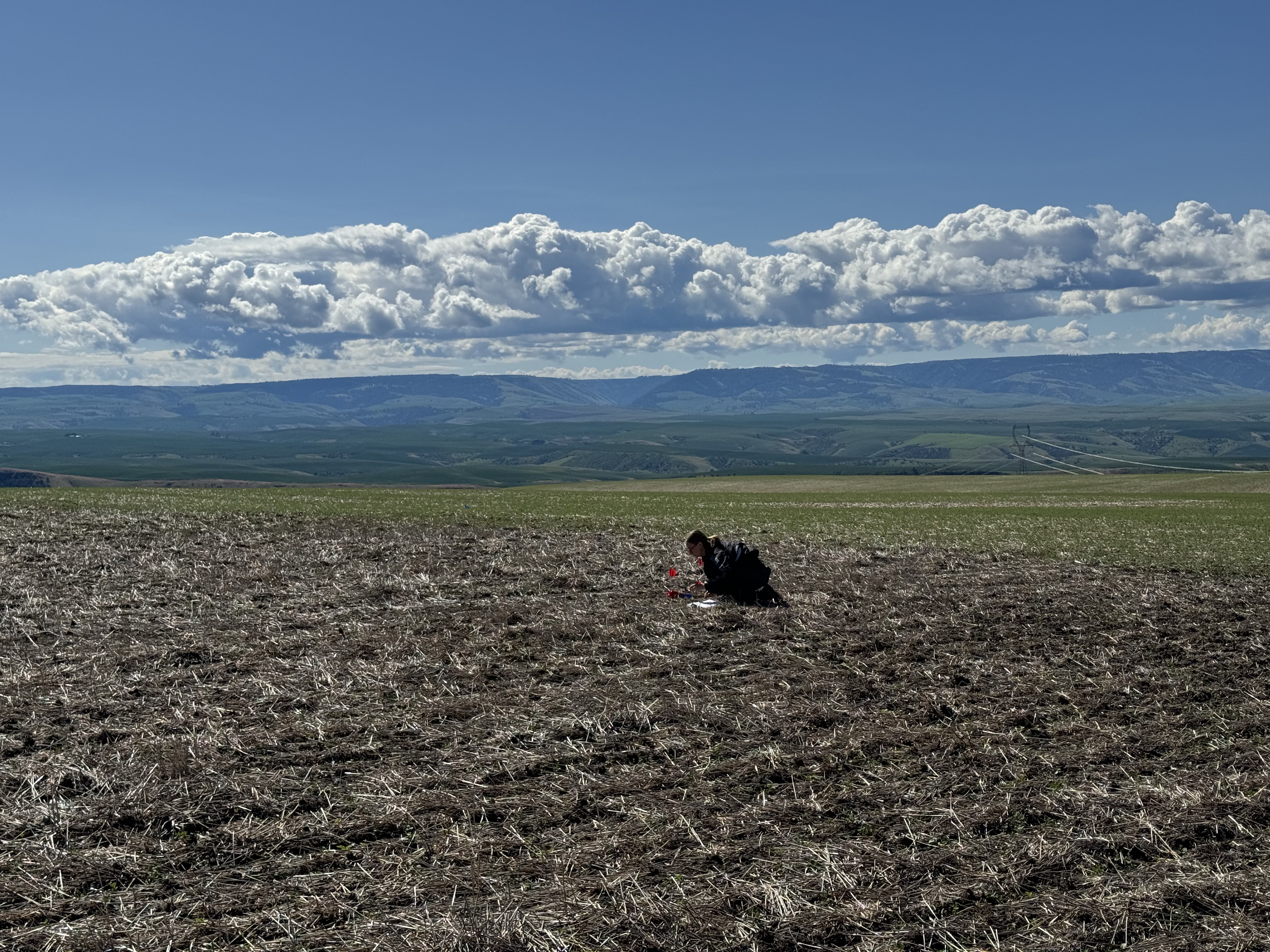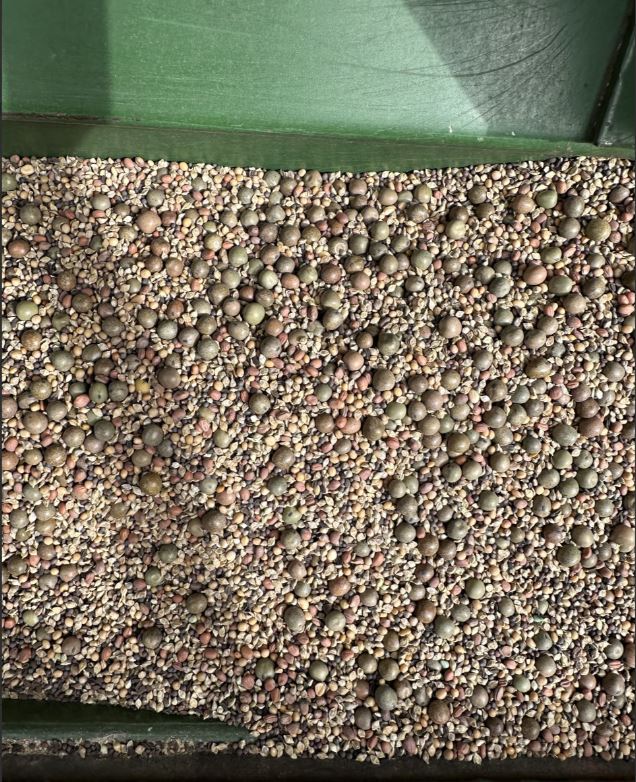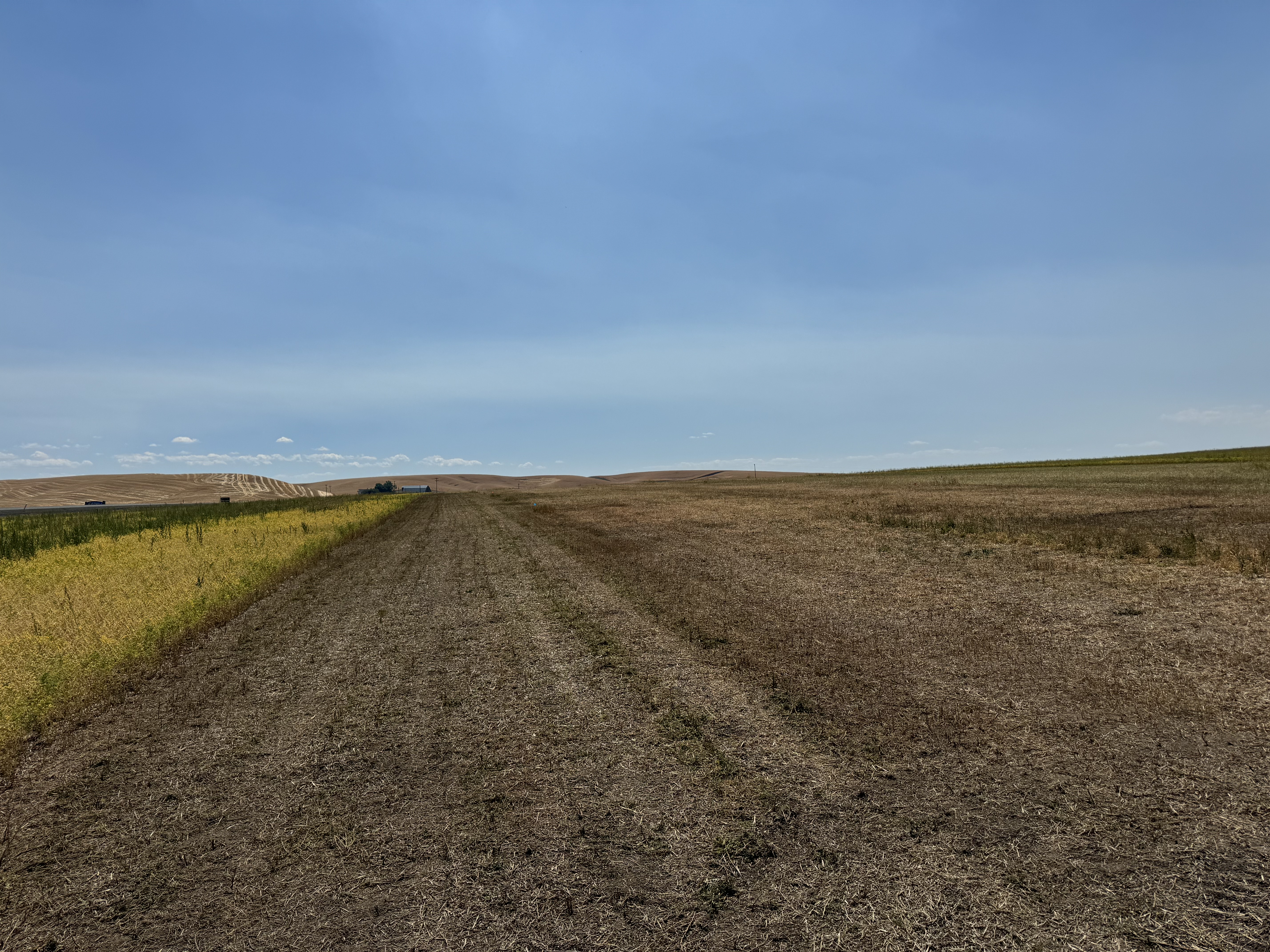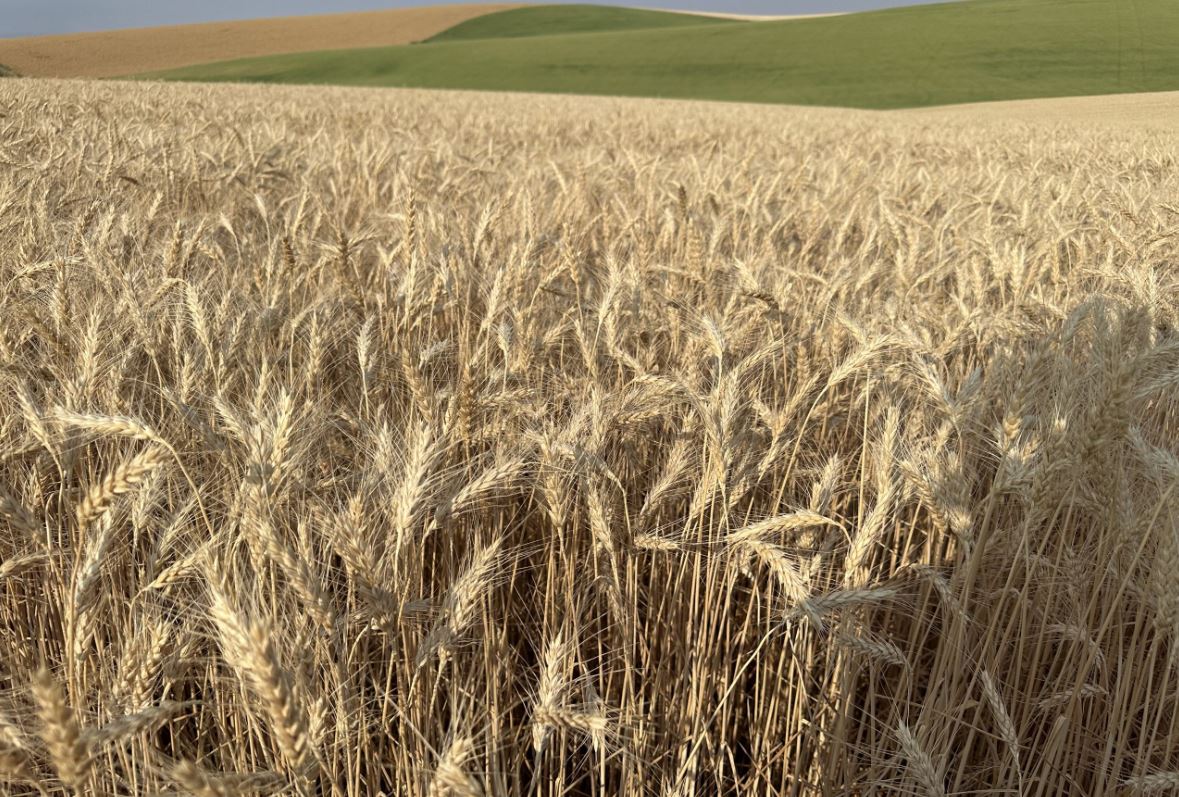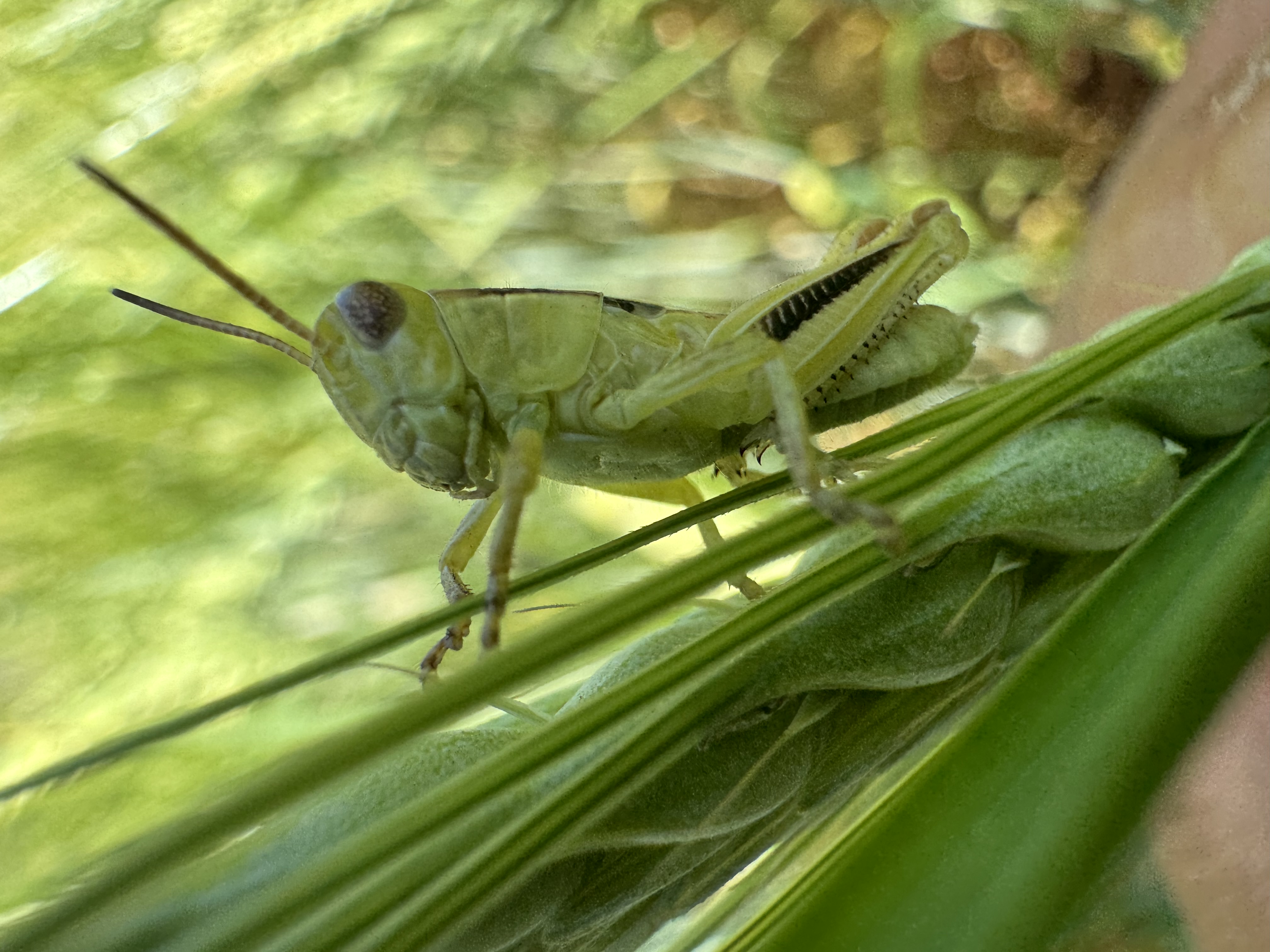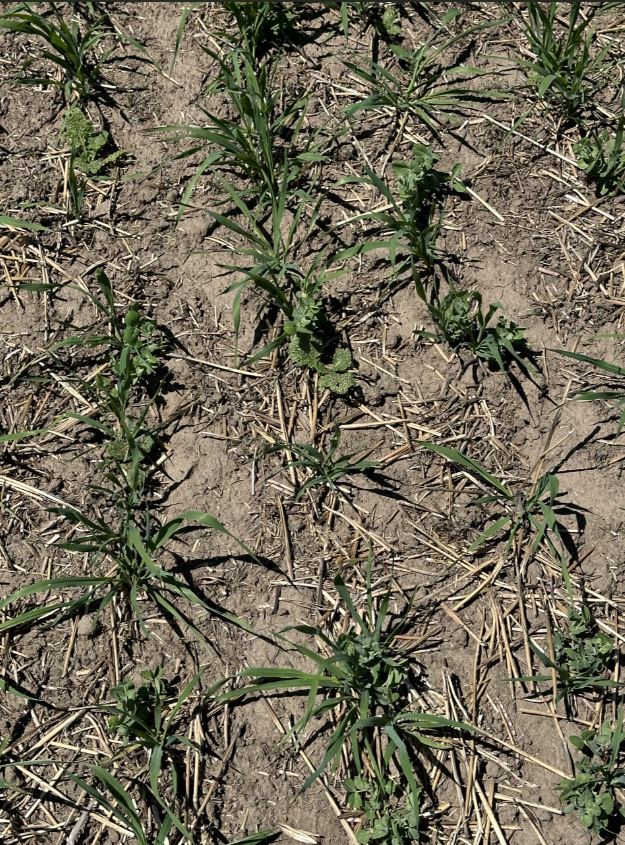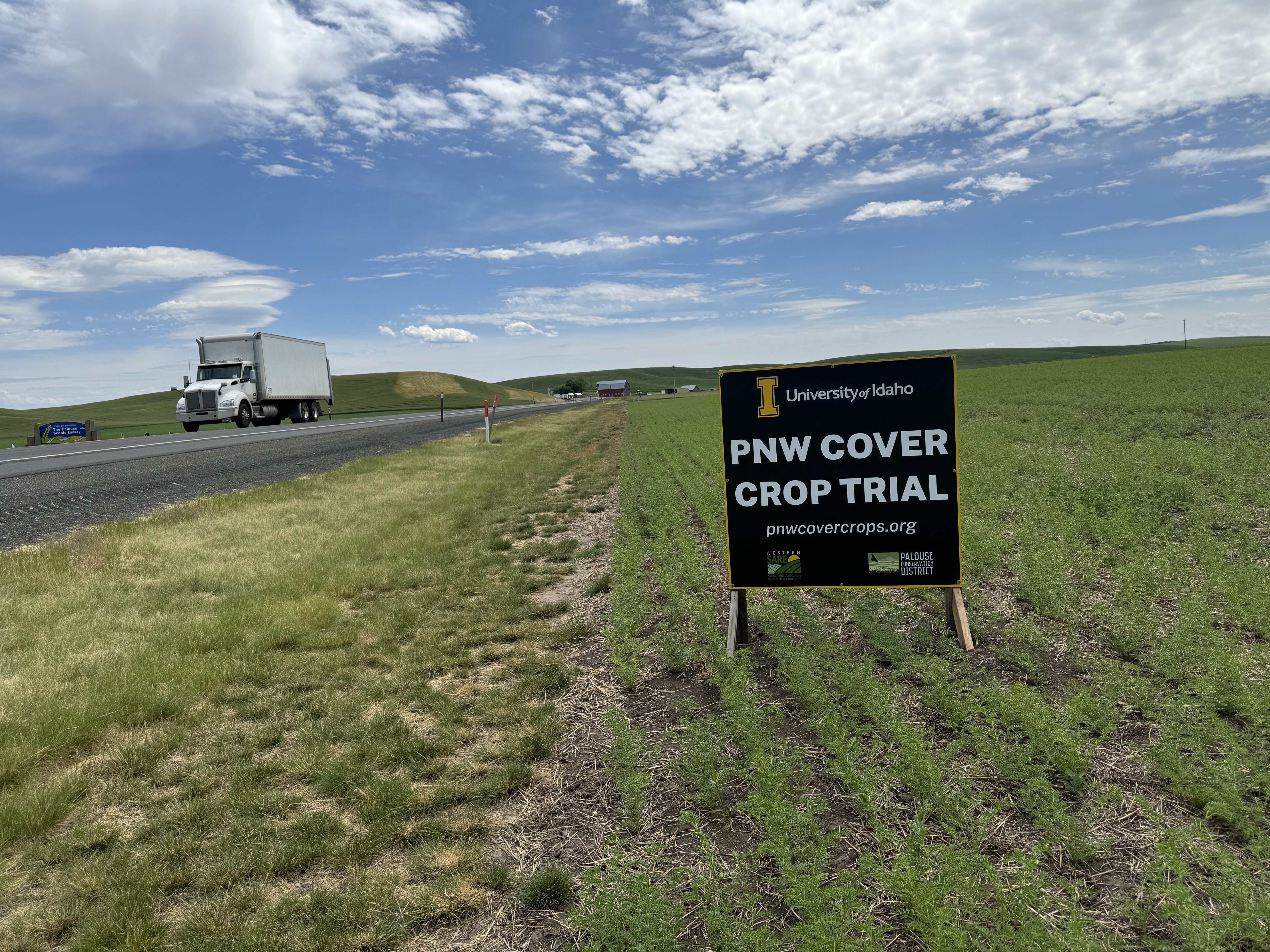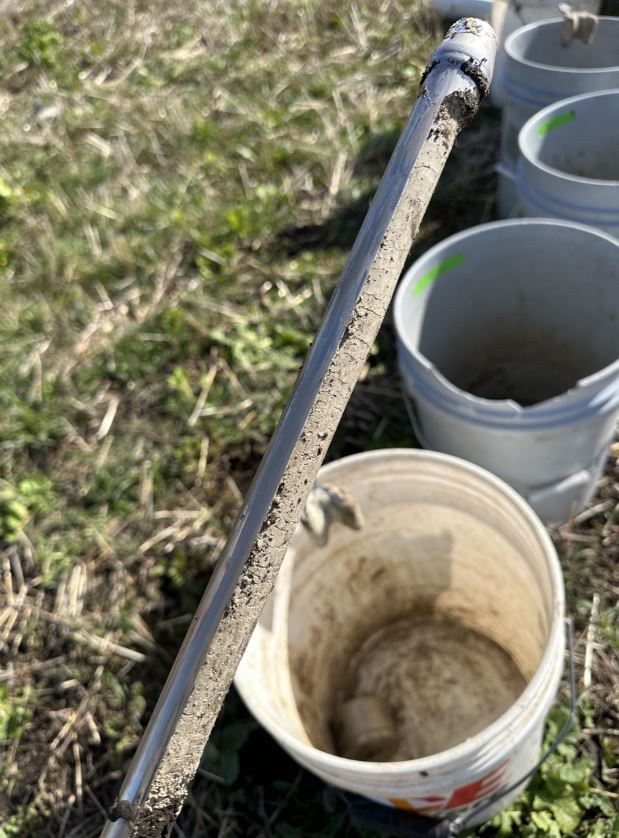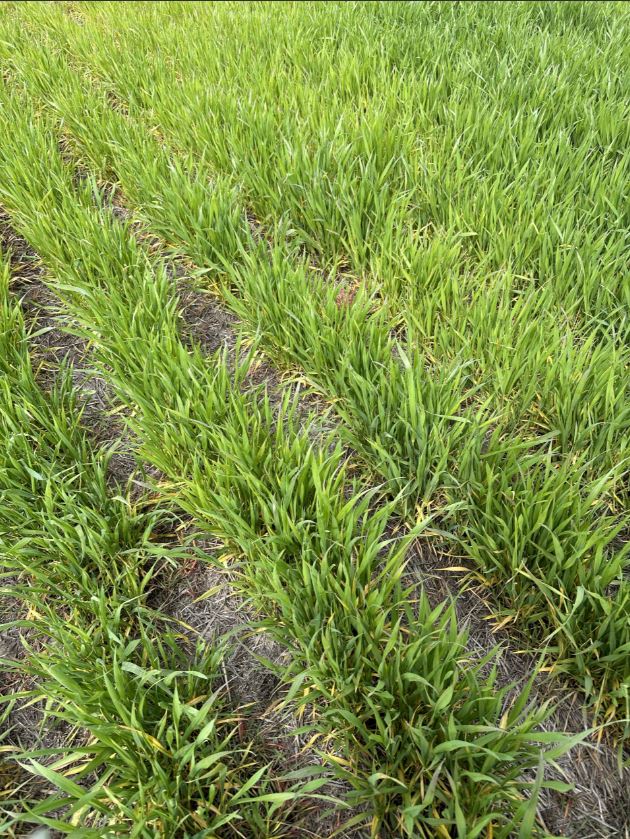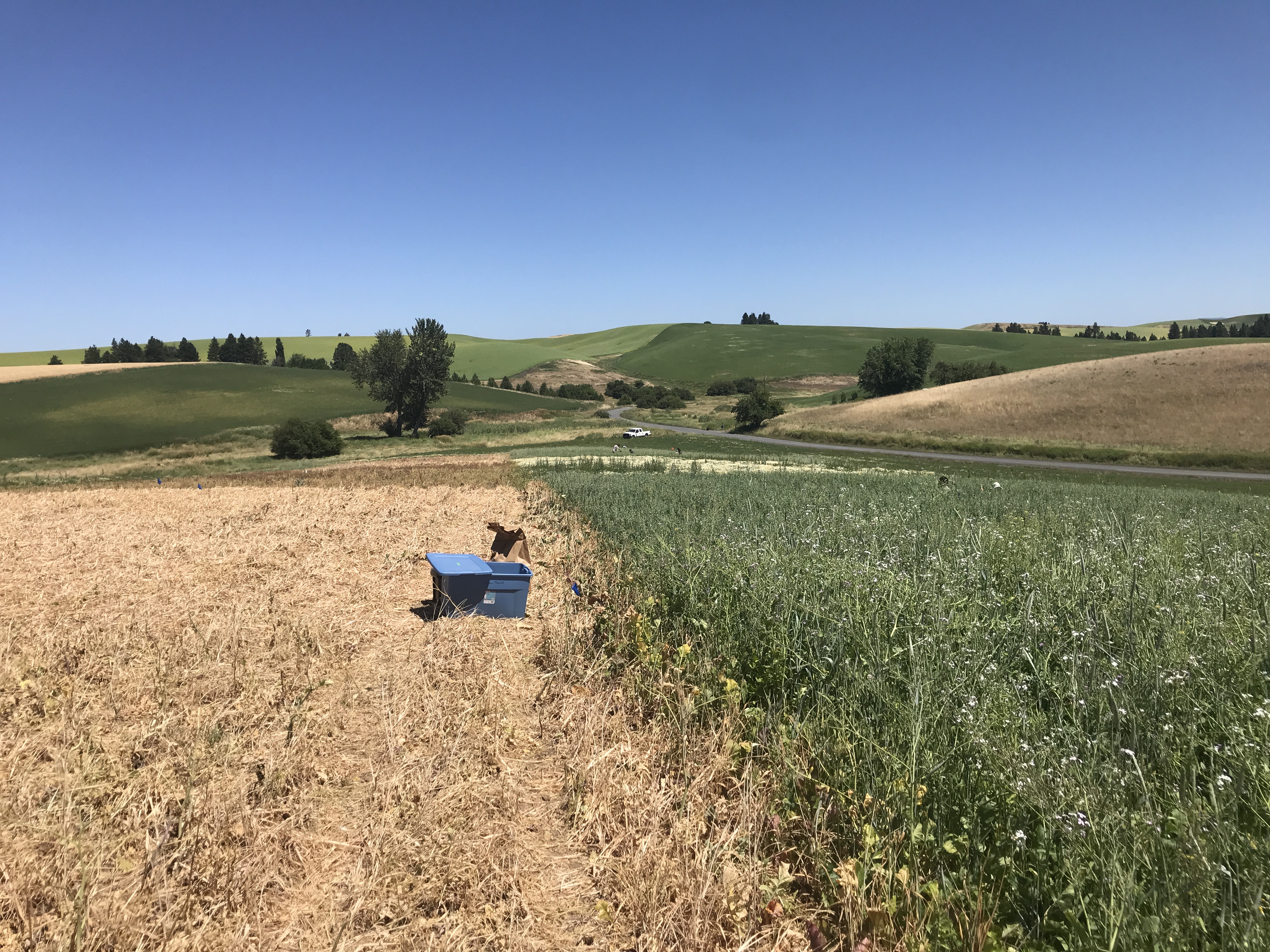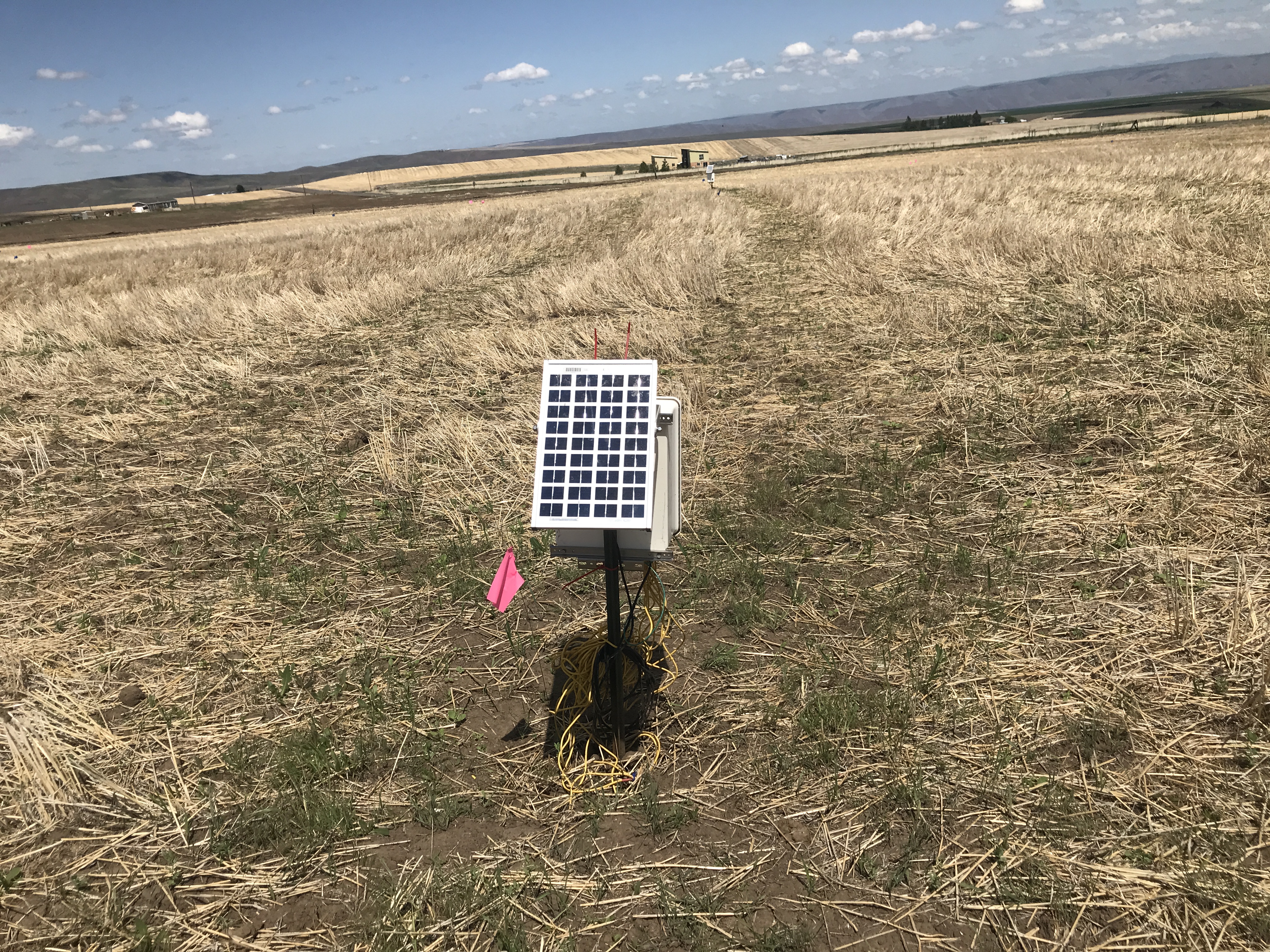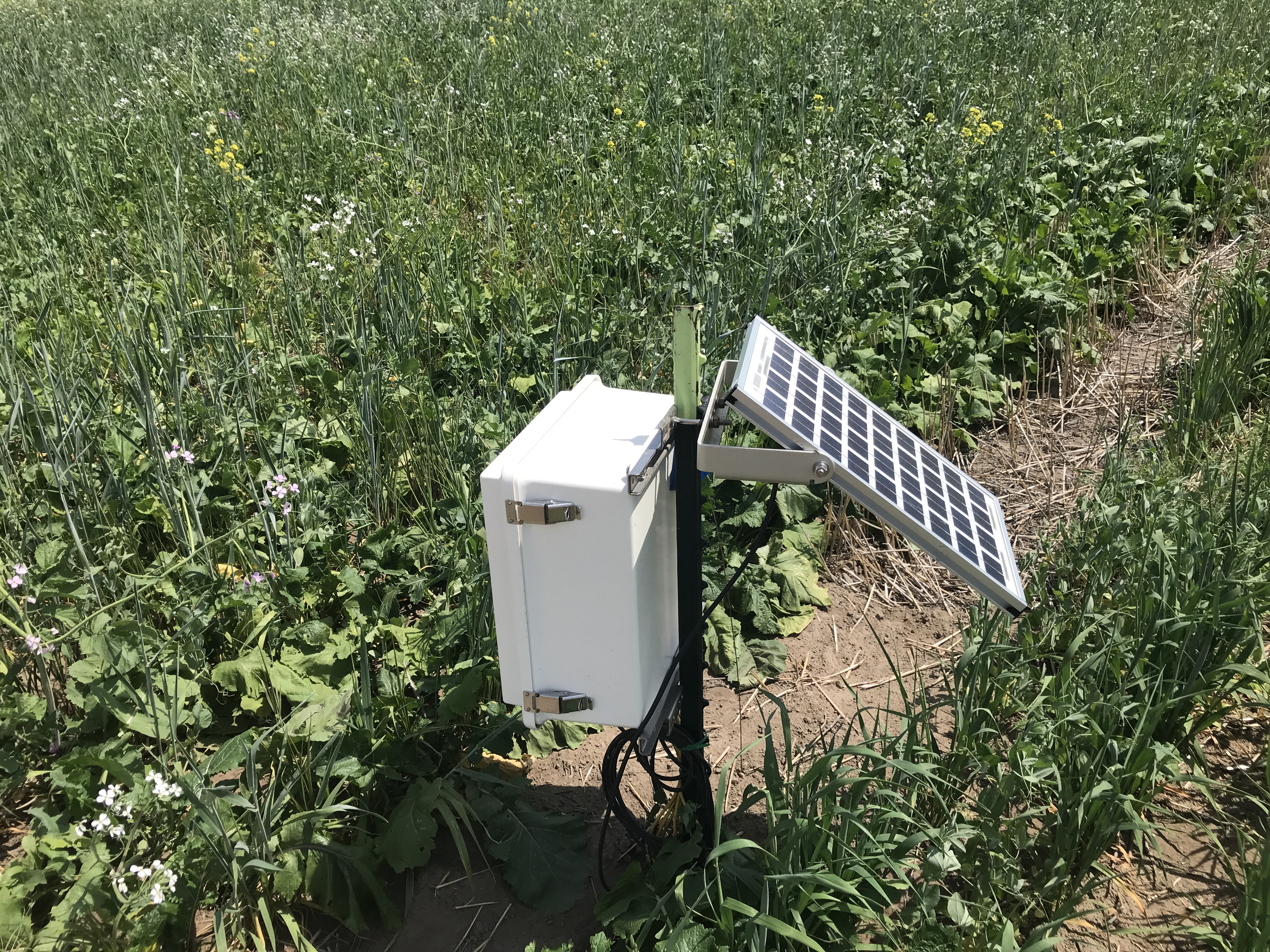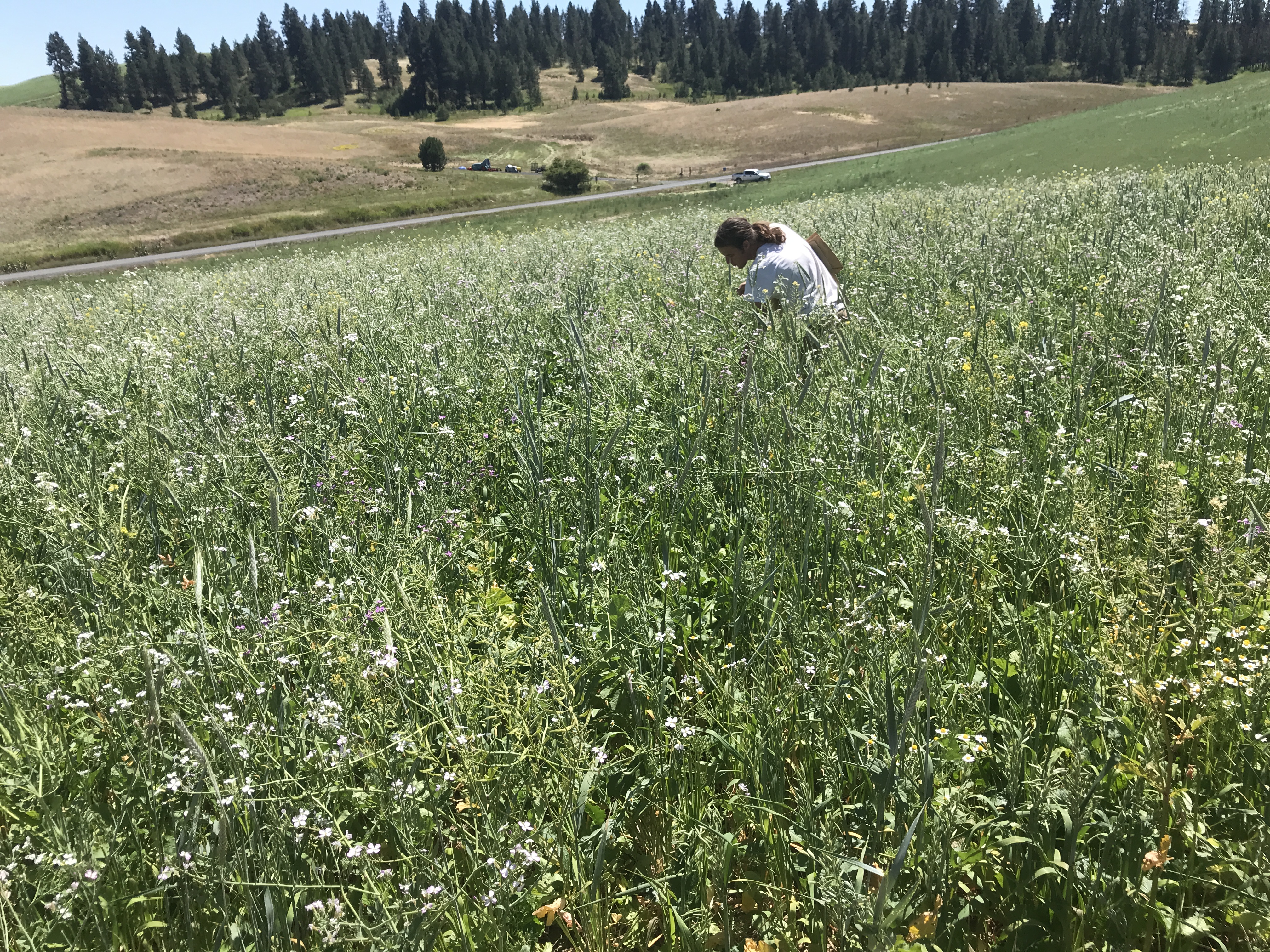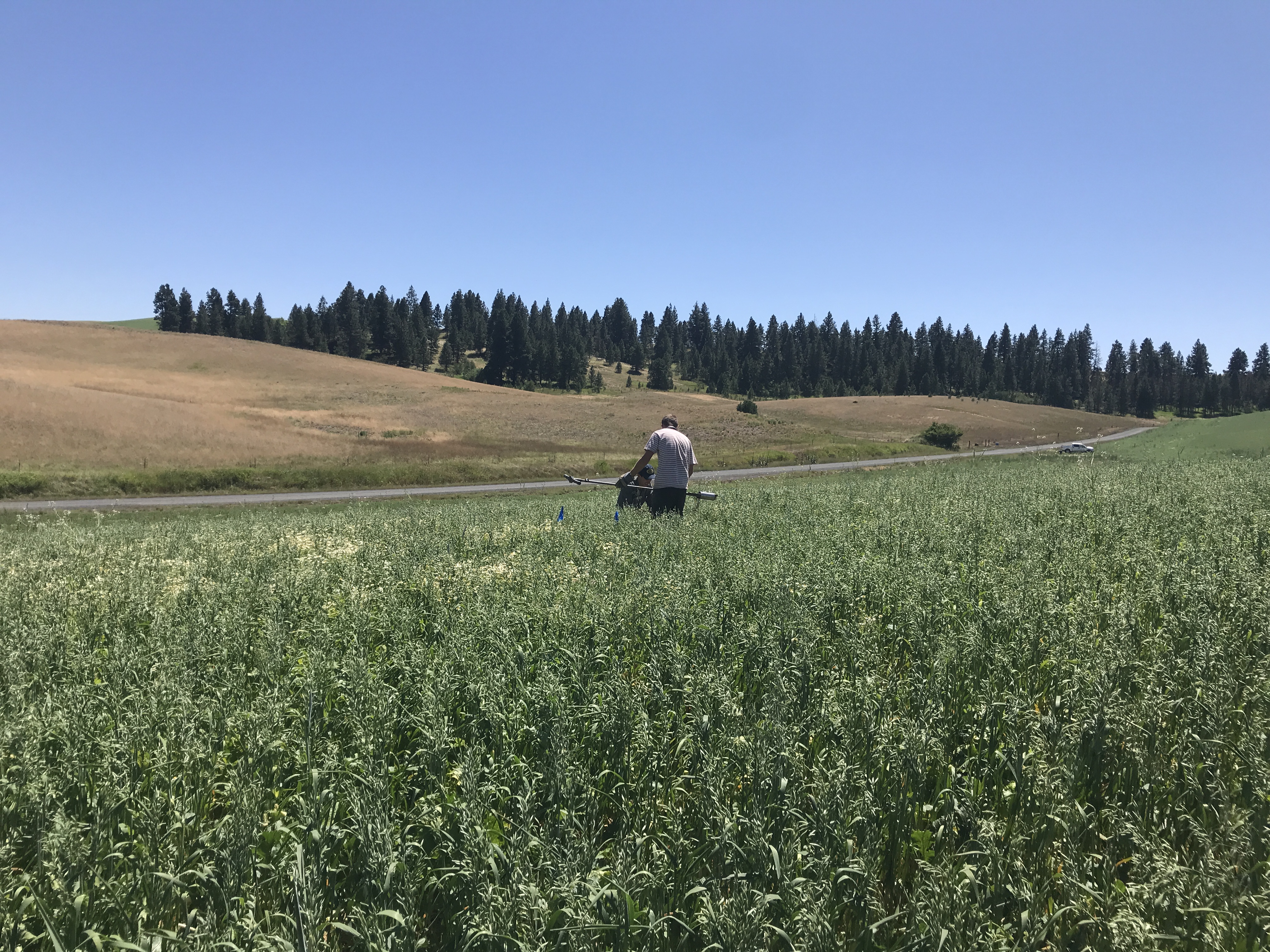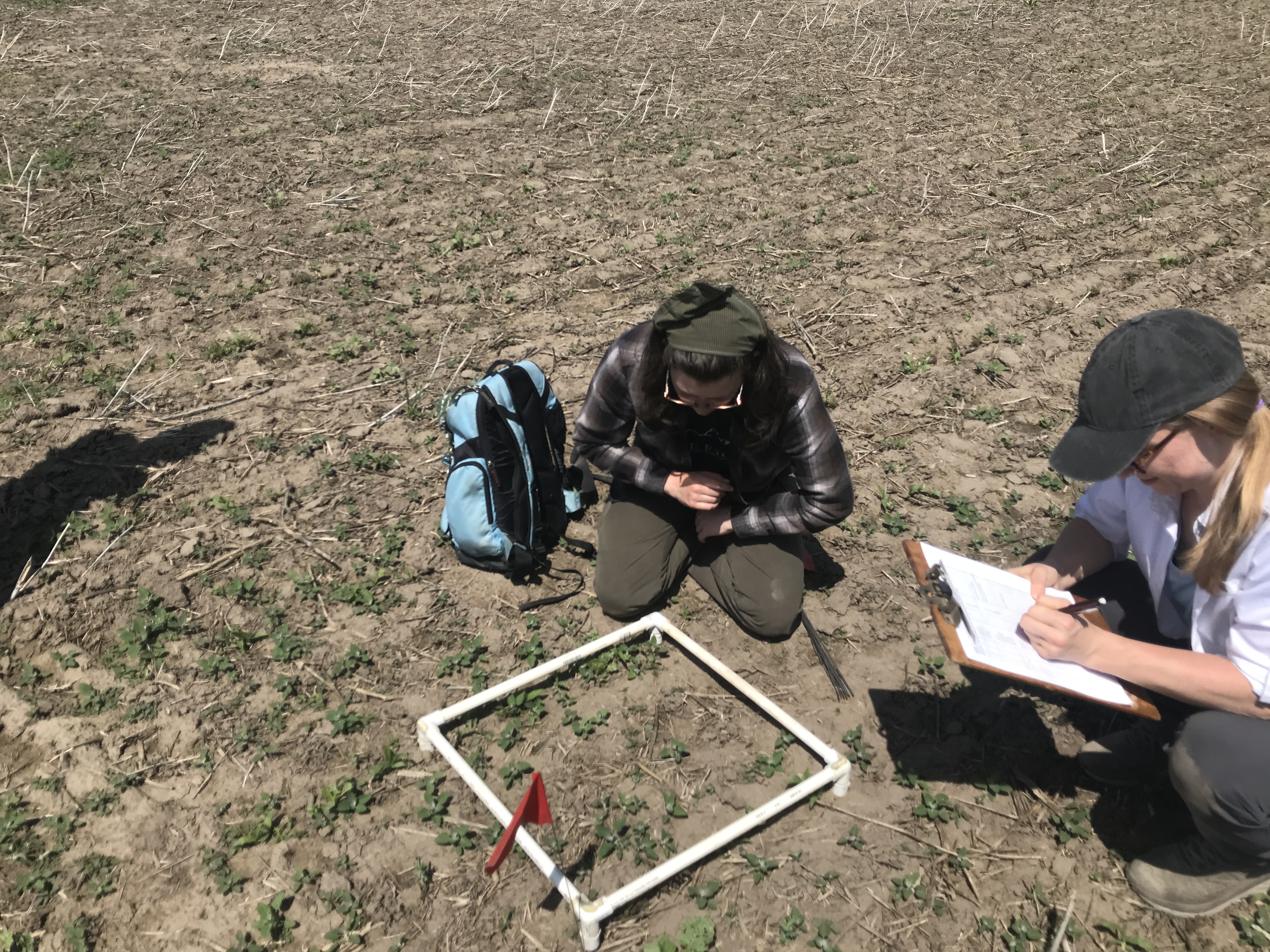Winter 2024 - Annual Meeting Summary
Summer 2025 - Field Work Summary
The fields set up in the years previous were monitored through the summer of 2025. Winter wheat growing in the 2025 trial locations was harvested identically to the previous year. Yield and quality were measured from these samples. Soil cores were taken in the spring at two depths (1, 2 ft), and in the fall at five depths (1, 2, 3, 4, 5 ft) for nitrogen, water content, and organic matter analysis.
The 2023 trial locations were continuously monitored. Soil sensors set up in these fields continued to monitor moisture through the second-year follow-on crop, which varied by site. Additionally, these crops were sampled at each site for measurement of quality and yield two years post-cover crop. Soil samples taken in the late summer at these sites will be used to determine baseline soil health characteristics (pH, organic matter, nitrogen content), before the seeding of a fall cover crop.
February 2025 - Planning Meeting Summary
The entire team of scientist and producer PIs met just prior to the Palouse Alternative Cropping Symposium in Colfax WA, in the Whitman County Fairgrounds activity building on Feb. 27, 2025. Given that the project is potentially extendable for another three years with funding from WSARE, this meeting was designed to gauge interest in continuing the project and to discuss the questions and issues that a continuation could address.
Key takeaways for the meeting included:
- Interest in continuing the project was unanimous.
- Several refinements were discussed concerning setting more realistic termination dates based on project experiences and to do that with involvement of RMA, whose policies regarding termination shaped the current project design.
- There was much more interest among producers and scientists in restructuring PaNDAS 2.0 to focus on fall-seeded cover crops, which are used by early adopters but have not been studied intensively for effects on biota, weeds, insects, and soil moisture. The consensus of the meeting was to pursue this direction, with details to be determined, but also maintain some trials with spring seeded cover crops to continue the original treatments for multiple crop rotations.
- PaNDAS WSARE producer PIs elected to initiate a common pilot study by planting standard mixes on their operations in fall 2025.

December 2024 - Annual Meeting Summary
The PaNDAS annual meeting was held at the University of Idaho on Dec 5, 2024. During the meeting, an overview of the second field season accomplishments was presented and discussed among researchers and producers. Plans for the final year of data collection were solidified. Data collection from the 2024 field season included soil and crop analysis of the winter wheat following the 2023 cover crop plots, and soil and crop monitoring of the second set of cover crop plots that were seeded in spring 2024.
Key takeaways for the meeting included:
- There was a consensus among producer PIs that the second termination date appeared most beneficial after the two years of cover crop trials.
- Producer PIs expressed strong interest in monitoring cash crop performance two years after the cover crop plots (following the first set of plots), so we added additional yield and biomass to the 2025 field season data collection plan.
- Producer PIs were interested in continuing the cover crop trials beyond the initial 3 years funded by WSARE. Goals for future research include:
- Understanding long-term impacts of cover crops on soil properties, yield, weeds and cropping system performance
- Incorporating winter cover crop treatments into established cover crop trials
- Question: When to terminate cover crops in spring or intercrop with spring crops?
- Add fertilizer treatments as a variable to future research in established plots
- Question: How does soil nutrient availability and cycling change if fertilizer rates are reduced to cash crops following cover crops?
- Measure soil biological properties in cover crop plots to determine impact over medium and long-term
- Particular interest in measuring soil arthropods in cover crop treatments in future work
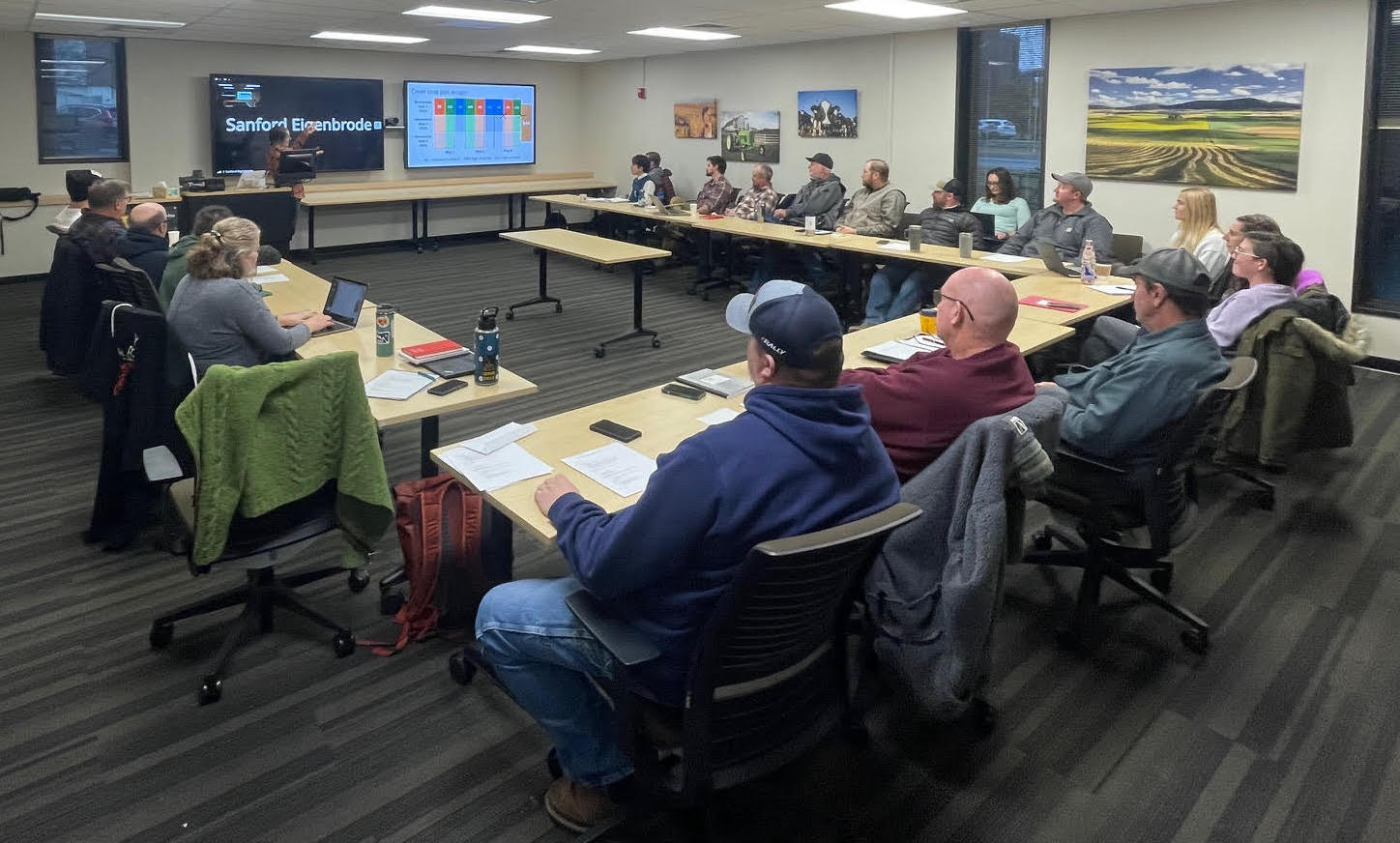
Summer 2024 - Field Work Summary
An additional eight fields (four annual cropping zone and four transition cropping zone) at producer cooperator's farms were identified and flagged by late spring. Nine strip plots (three replicates x three treatments: low diversity, high diversity, and producer choice) were set up on each field. Soil moisture sensors installed in last year's cover crop plots remained in place to continue monitoring moisture throughout winter wheat crop growth. New soil moisture sensors were not installed in this year's cover crop plots, but soil moisture was monitored by taking gravimetric water content measurements before, during, and after the growing season. Soil cores were collected at five depths (1, 2, 3, 4, 5 ft) for nitrogen, bulk density, and organic matter analyses. In addition, about four weeks after crop seeding, crop emergence was assessed for all treatments and fields.
Cover crops were terminated (primarily using glyphosate) on three different dates: June 1 for annual transition cropping zone fields and at first bloom (50% flowering) for annual cropping zone fields. Additional termination dates (TD2 and TD3) were determined based on crop stages and farm conditions throughout June and July. Before each termination date, crops, weeds, insects, and soil were sampled across treatments and BAU (Business-as-usual crop) at each field. This year, winter wheat (a follow-on crop), grown in last year's cover crop plots, was also harvested for the measurement of yield and quality.
Winter 2023 - Annual Meeting Summary
The PaNDAS annual meeting was held on Nov 29, 2023. During the meeting, an overview of the first field season, work, and accomplishments were discussed among researchers and producers. Researchers presented preliminary results from the first year of cover crop trials at producers' fields. Preliminary results of sensor data showed that termination dates affected soil water depth more in transition cropping zones than in annual cropping zones, but this varied among sites. Overall, weed and cover crop biomass was lower in the transition cropping zones when compared to annual cropping zones, most notably in first termination date (June 1). However, regardless of cover crop mix (high diversity, low diversity and producer choice) weed biomass was similar. Cover crop biomass was mostly similar among treatments and dominated by grasses or brassicas. The meeting also included a discussion by producer PIs on issues faced in 2023 and ways to improve in 2024. The meeting concluded with a 2024 planning overview.
Key takeaways of meeting included:
- Cover crop plots will be in new locations in 2024 with the same design.
- Monitoring of soil water will continue in the 2023 cover crop fields, following winter wheat planting, and through harvest.
- Moisture sensors will not be installed in cover crop plots in 2024. Rather, moisture will be determined by soil sampling throughout the season.
- Primary termination method will be glyphosate next year, but other herbicide combinations or termination methods (e.g., mowing) are acceptable as needed for effective termination.
- The cover crop mixes used in 2023 will be used for the 2024 field trials.
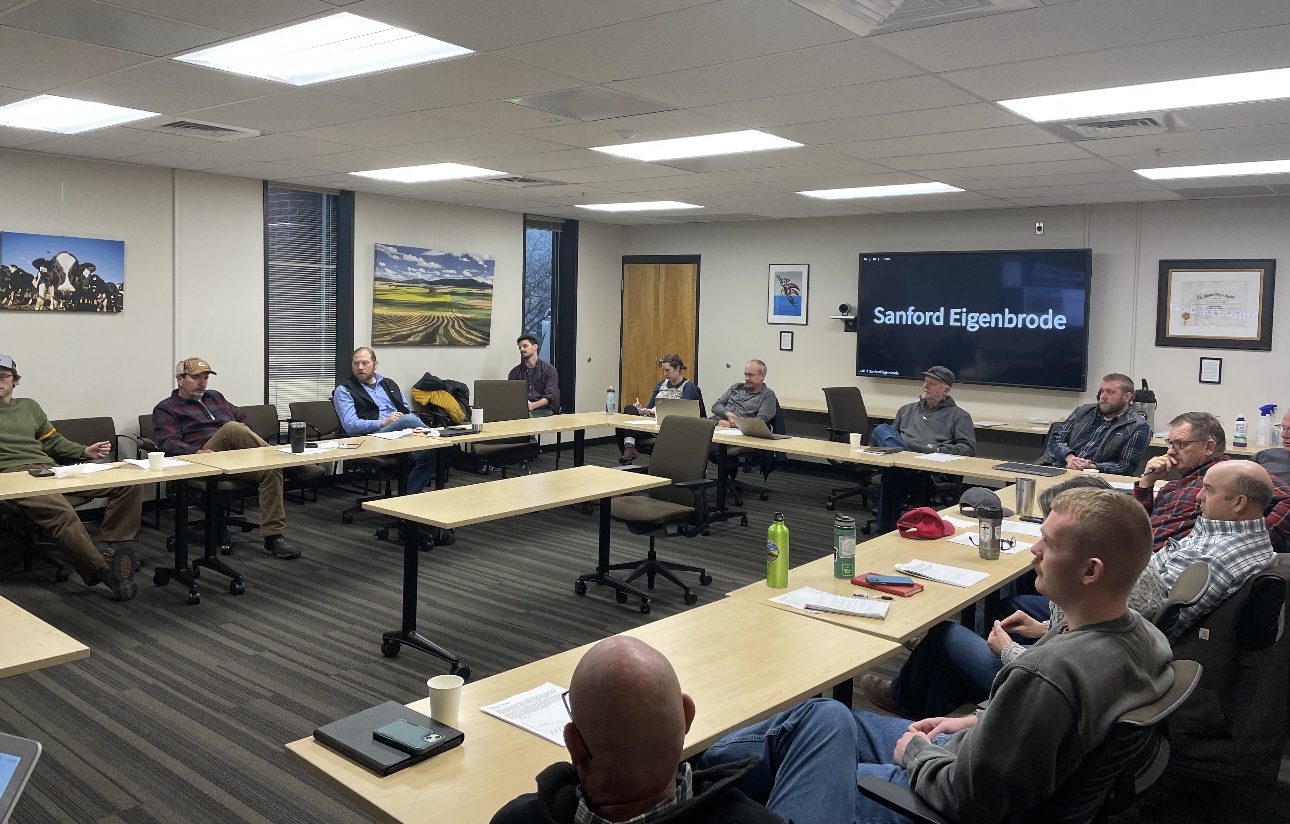
Summer 2023 -Field Work Summary
Eight (four annual crop zone and four annual crop-fallow transition zone) producer cooperator's fields (4 acres each) were identified in the Palouse region in early spring. In late April/early May, nine strip plots (3 replicates X 3 treatments) were set up on each field. Soil moisture sensors were installed at different depths to monitor soil moisture for three cover crop treatments: low diversity, high diversity, and producer choice. Soil cores were collected for analysis. Crop emergence was assessed for all treatments and fields four weeks after seeding. Cover crops were terminated (using herbicide) on three different dates: June 1 for transition zone fields and at first bloom (50% flowering) for annual zone fields. Additional termination dates (TD2 and TD3) were determined based on crop stages and farm conditions. Before each termination date, crops, weeds, insects, and soil were sampled across treatments on each field.

